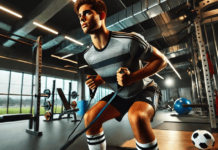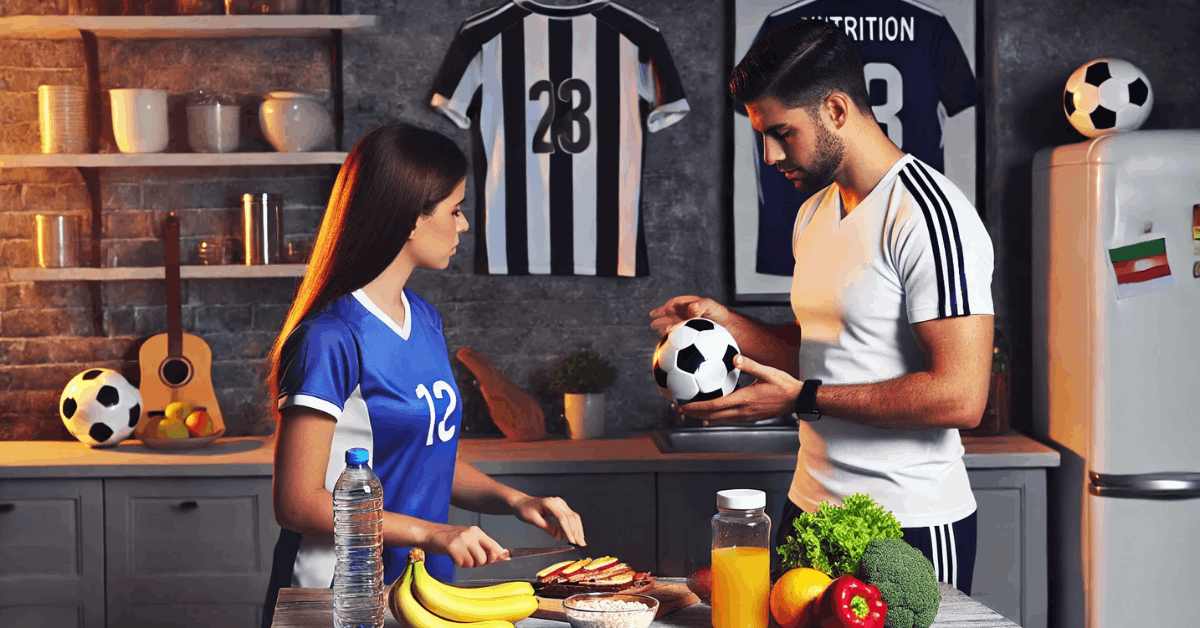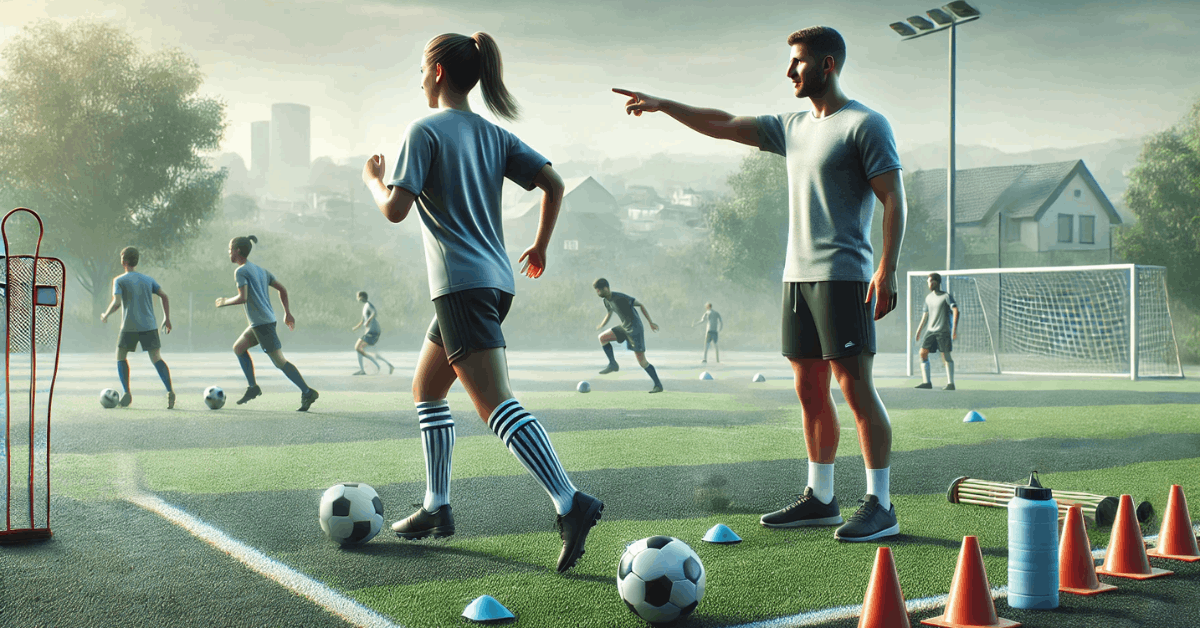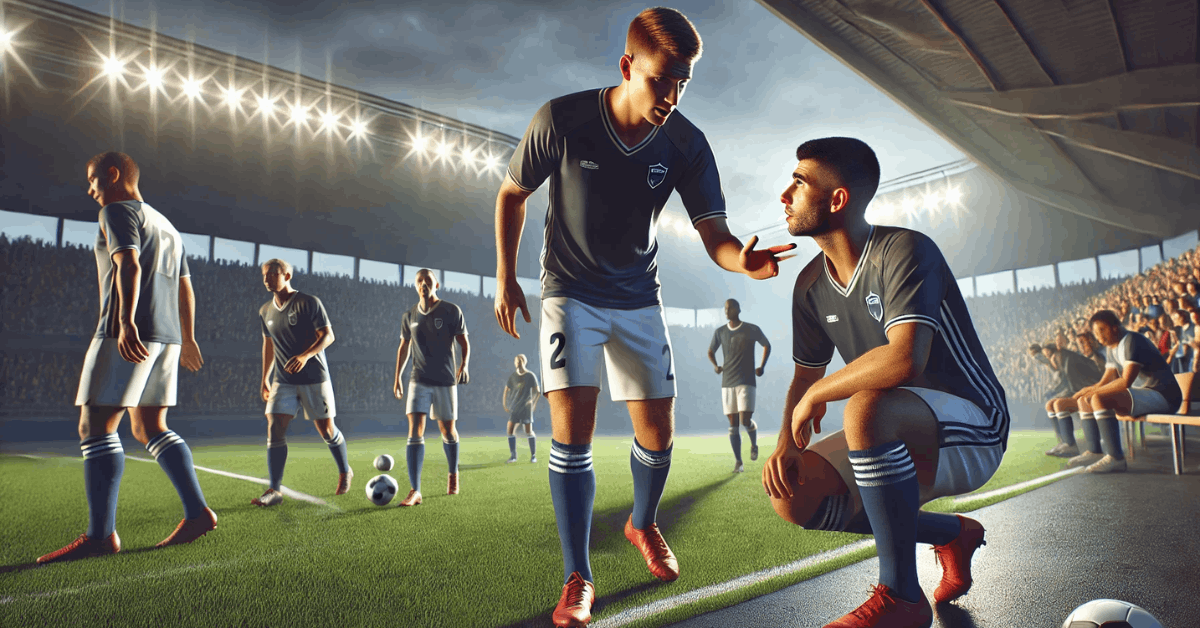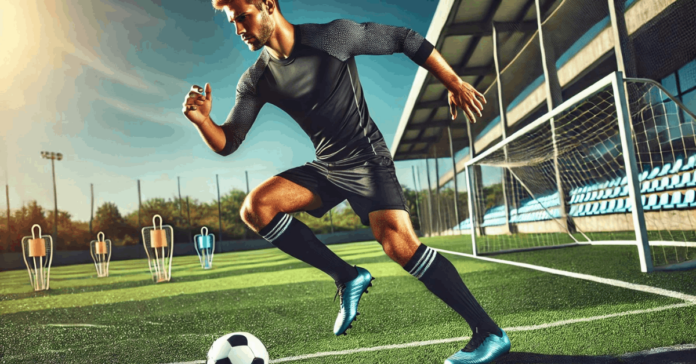
Practical soccer training hinges on tailoring drills to each player’s position.
Goalkeepers, defenders, midfielders, and forwards require unique exercises to excel in their specific roles.
This guide explores essential drills designed to enhance the critical skills needed for each position, ensuring players are fully prepared for success on the field.
Goalkeeper Training Drills
Goalkeeper training focuses on improving reflexes, shot-stopping, distribution, and positioning.
These drills are essential for a goalkeeper’s success on the field.
- Reflex Training: Quick-reaction drills like ball drops sharpen reflexes to handle fast shots.
- Shot-Stopping: Drills for saving from different angles improve the ability to block difficult shots.
- Distribution: Practicing long throws, goal kicks, and passing ensures accurate ball distribution.
- Positioning and Footwork: Movement drills improve lateral quickness and proper positioning to cover all angles.
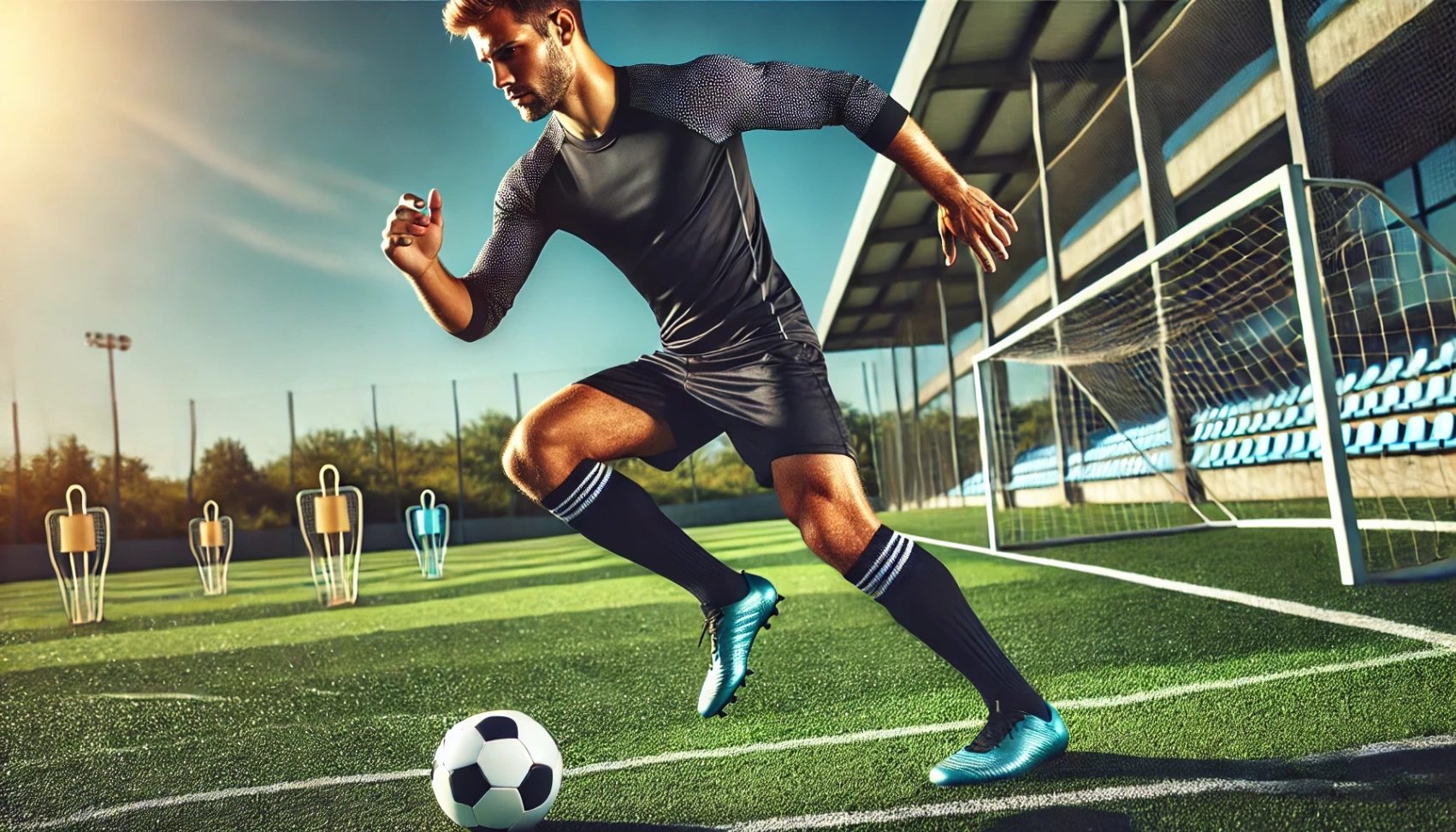
Defender Training Drills
Defender training strengthens core skills like tackling, positioning, aerial duels, and passing.
These drills help defenders stay solid at the back and effectively protect the goal.
- Tackling and Marking: 1v1 tackling and marking drills improve defenders’ ability to win challenges and stay close to opponents.
- Positioning and Shape: Drills are focused on shape, and recovery runs ensure defenders can block attacks.
- Aerial Duels: Heading drills help defenders win aerial battles and control threats from set pieces or long balls.
- Passing from the Back: Short and long passing drills help defenders start attacks and relieve defensive pressure.
Midfielder Training Drills
Midfielders play a crucial role in connecting defense and attack, so their training focuses on passing, stamina, decision-making, and ball recovery.
These drills help midfielders maintain control and dominate the center of the field.
- Passing and Ball Control: Short and long passing drills improve ball retention and help midfielders move the ball efficiently.
- Stamina and Endurance: High-intensity drills build the stamina midfielders need to cover the field.
- Vision and Decision-Making: Quick decision-making drills sharpen a midfielder’s ability to pass under pressure.
- Ball Recovery: Pressing and tackling drills help midfielders win back possession and disrupt play.
Forward Training Drills
Forward players need specific training to sharpen their finishing, movement, dribbling, and aerial ability.
These drills are vital to turning chances into goals and keeping defenders under pressure.
- Finishing and Shooting: Accuracy and one-on-one drills improve a forward’s ability to score from various angles.
- Movement off the Ball: Positioning drills enhance timing and space creation for scoring chances.
- Dribbling in Tight Spaces: 1v1 dribbling drills boost control and confidence in beating defenders.
- Aerial Finishing: Heading and volley drills help forwards capitalize on crosses and high balls.
Team Drills for Positional Play
Team drills for positional play help players work together and understand their roles within the team structure.
These exercises build coordination, communication, and tactical awareness.
- Small-Sided Games: Playing 5v5 or 7v7 forces players to work in tight spaces, improving positional awareness and quick decision-making.
- Communication Drills: Drills emphasizing verbal coordination help players develop strong communication, ensuring everyone knows their role and positioning.
- Set-Piece Training: Practicing corners, free-kicks, and throw-ins enhances team coordination in attacking and defending set plays.
Position-Specific Fitness
Position-specific fitness ensures that each player develops the physical traits required for their role on the field.
Goalkeepers need power and flexibility, defenders require agility, midfielders rely on endurance, and forwards benefit from speed and explosiveness.
- Goalkeepers: Focus on explosive strength and flexibility to improve diving and quick movements.
- Defenders: Agility and speed drills help defenders close down attackers and recover position.
- Midfielders: Endurance and interval training build stamina to cover large areas of the field.
- Forwards: Sprinting and power workouts boost acceleration and top speed for breakaways.
Mental Training
Mental training is just as crucial as physical training in soccer.
Players need focus, game awareness, and leadership skills to perform under pressure and make smart decisions in real-time situations.
- Focus: Visualization exercises help players stay mentally sharp and focused during critical game moments.
- Game Reading: Studying game footage trains players to anticipate plays and improves their overall tactical awareness.
- Leadership: On-field communication drills develop leadership and motivate teammates to stay organized and confident.
Adapting Drills for Skill Levels
Adapting drills for different skill levels ensures that training is practical for players at all stages of development.
Whether a beginner or an advanced player, drills should be tailored to match abilities and promote growth.
- Beginners: Simplify drills by focusing on basic techniques and ensuring players understand the fundamentals of the game.
- Intermediate: Introduce more complex drills, increasing speed and intensity to challenge players and refine their skills.
- Advanced: Use game-like scenarios and high-pressure drills to push advanced players, encouraging quick decision-making and mastery under stress.
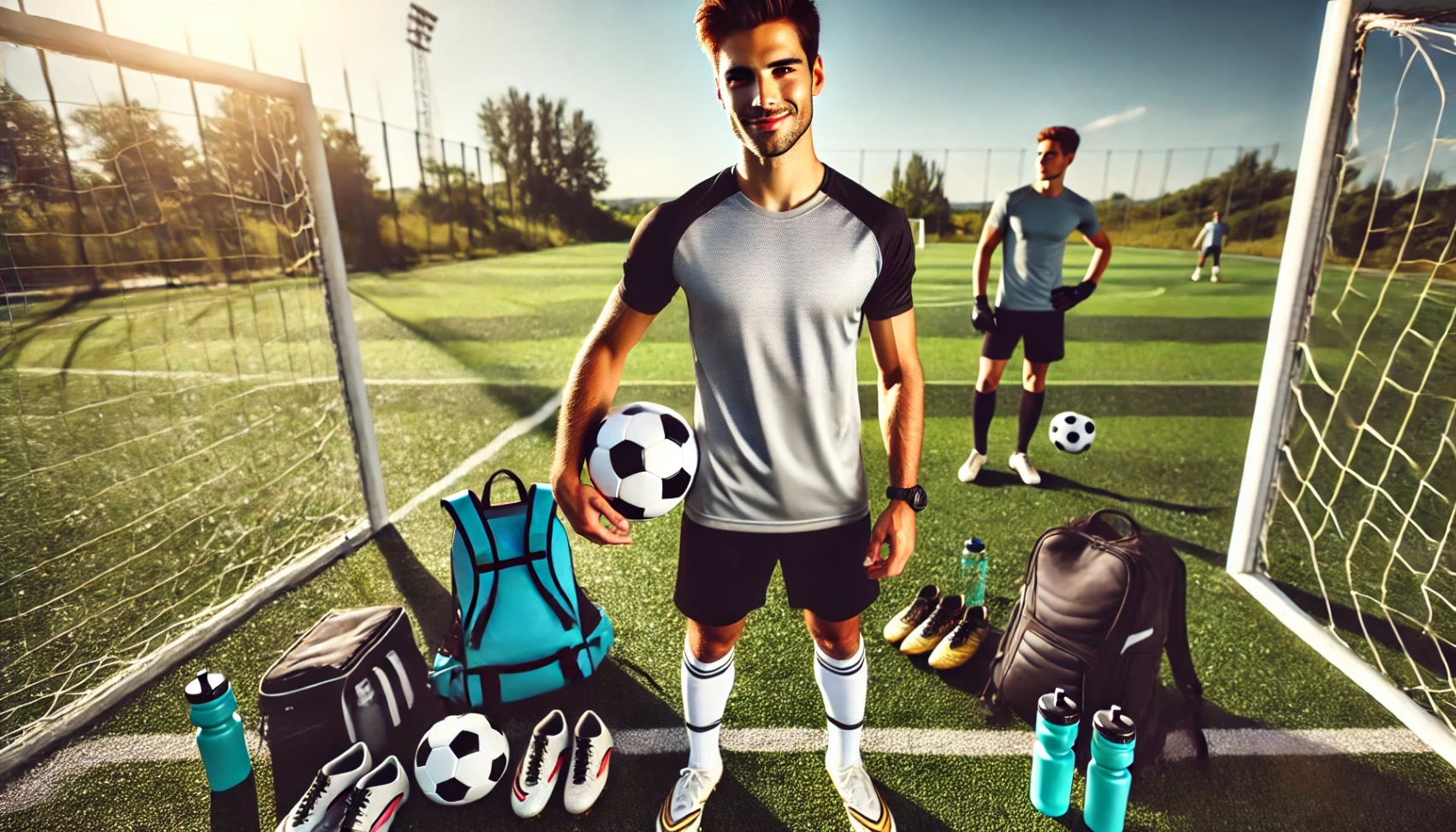
Rest, Recovery, and Nutrition
Rest, recovery, and nutrition are essential for keeping players in peak condition.
Proper recovery ensures players can maintain high performance while reducing the risk of injury, and good nutrition fuels the body for training and matches.
- Rest Days: Scheduled rest days allow muscles to recover and prevent overtraining, which helps sustain long-term performance.
- Stretching and Mobility: Stretching routines and mobility exercises improve flexibility and reduce the risk of injuries during matches.
- Balanced Nutrition: A well-rounded diet rich in proteins, carbs, and healthy fats supports energy levels and aids muscle recovery.
Agility and Speed Training
Agility and speed training are critical for improving a soccer player’s ability to change direction quickly and accelerate.
These drills help players stay fast and agile during matches, giving them an edge over opponents.
- Ladder Drills: These footwork exercises improve quickness and coordination, helping players move efficiently in tight spaces.
- Sprinting Drills: Sprint intervals boost acceleration and top speed, giving players an advantage in breakaways and chasing down opponents.
- Change of Direction: Drills focusing on quick pivots and turns help players react faster and change direction without losing speed.
Technical Drills for Ball Control
Technical drills for ball control are essential for improving a player’s touch, coordination, and overall mastery of the ball.
These exercises help players maintain possession and execute precise movements in tight situations.
- Juggling: Juggling drills enhance touch and ball coordination, helping players develop better control under pressure.
- First-Touch Training: Drills focused on controlling the ball with the first touch, allowing players to manage difficult passes and keep possession.
- Dribbling Exercises: Controlled dribbling drills in tight spaces help players improve ball handling and maneuverability in game situations.
Tactical Awareness Drills
Tactical awareness drills improve players’ understanding of the game, positioning, and decision-making.
These exercises help players anticipate plays and make smarter decisions on the field.
- Positional Rotations: Rotational drills help players understand different roles and improve game awareness.
- Scenario-Based Drills: Simulating specific game situations trains players to react quickly and adapt in real-time.
- Team Shape Drills: Exercises focused on maintaining formation, improving team structure, and reading the game.
Plyometric and Power Training
Plyometric and power training focuses on developing explosive strength, speed, and overall athleticism.
These exercises improve jumping, sprinting, and reactions, making players more effective in high-intensity moments.
- Box Jumps: Box jumps enhance lower body strength and explosiveness, which is crucial for jumping higher and reacting quickly.
- Medicine Ball Throws: These throws improve core strength and power, allowing players to generate more force in passes and shots.
- Lunges with Explosive Jumps: This drill builds leg power and agility, helping players quickly change direction and accelerate.
Injury Prevention Exercises
Injury prevention exercises are crucial for keeping soccer players healthy and minimizing time off the field.
These drills focus on strengthening vulnerable areas, improving flexibility, and maintaining mobility to reduce the risk of injuries.
- Strengthening Weak Areas: Focus on muscles prone to injury, like hamstrings, to prevent strains.
- Stretching Routines: Enhance flexibility to avoid muscle strains during intense play.
- Balance and Stability Drills: Boost balance to prevent injuries from unstable movements.
Crossing Drills for Wingers
Crossing is a crucial skill for wingers, enabling them to deliver accurate balls into the box to create scoring chances.
These drills focus on improving precision, timing, and delivering crosses under pressure.
- Wide-Position Crossing: Practice crossing from broad areas to improve delivery from the touchline.
- Crossing on the Run: Cross while sprinting to maintain accuracy under match conditions.
- Low and High Crosses: Focus on delivering low and high crosses based on the situation.
High-Pressure Game Simulation Drills
High-pressure game simulation drills recreate intense match situations to help players handle stress and make quick decisions.
These drills sharpen a player’s ability to perform under pressure and adapt to real-time challenges.
- Small-Sided Games with Limited Time: Fast-paced games force quick decisions and simulate match pressure.
- Pressing Drills: Focus on pressing to win the ball and improve reactions under pressure.
- Tight Space Drills: Play in confined areas to sharpen quick passing and movement in crowded situations.
Goalkeeper Distribution Under Pressure
Goalkeeper distribution under pressure is essential for starting counter-attacks and relieving pressure from the defense.
These drills focus on improving a goalkeeper’s ability to distribute the ball accurately while under stress from opponents.
- Long Ball Kicking: Practice goal kicks and long passes under pressure to deliver accurate balls deep.
- Quick Throws: Work on fast, precise throws to start counter-attacks quickly under pressure.
- Passing Under Pressure: Pass to defenders while opponents press to improve composure and accuracy.
Speed and Agility for Fullbacks
Speed and agility are essential for fullbacks, allowing them to cover the flanks, support attacks, and quickly recover on defense.
These drills focus on improving their ability to move quickly and change direction efficiently.
- Sprint Training: Short sprints build acceleration and speed for chasing attackers or pushing forward.
- Lateral Movement Drills: Side-to-side drills improve agility and help fullbacks adjust to quick direction changes.
- Quick Direction Changes: Sharp turns and pivots enhance recovery and defense during transitions.
Wrapping It Up
In conclusion, training soccer players for every position with specific drills is crucial for enhancing their skills and performance.
Whether it’s a goalkeeper’s distribution under pressure or a forward’s finishing technique, tailored training makes a difference on the field.
Use these position-specific drills today to quickly improve your game and boost your team’s performance.


